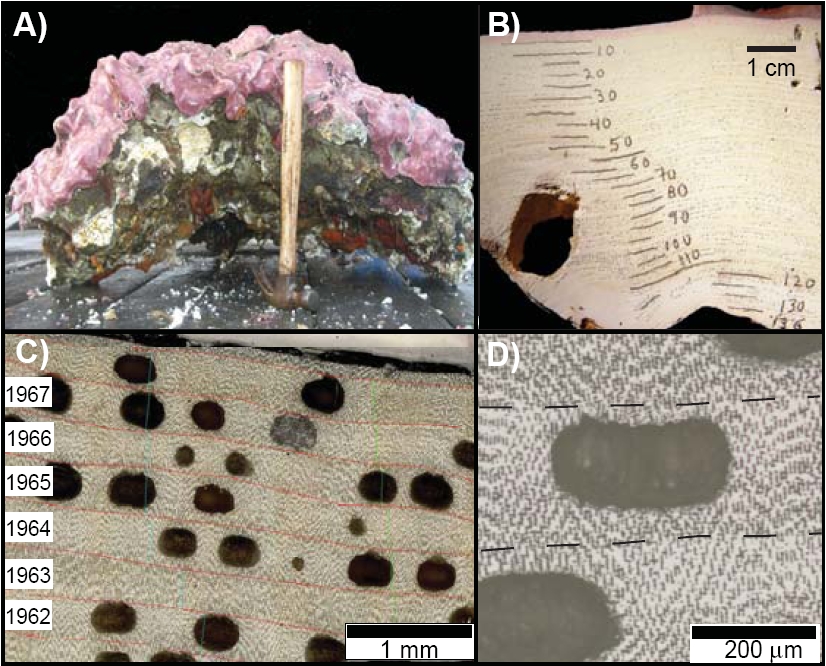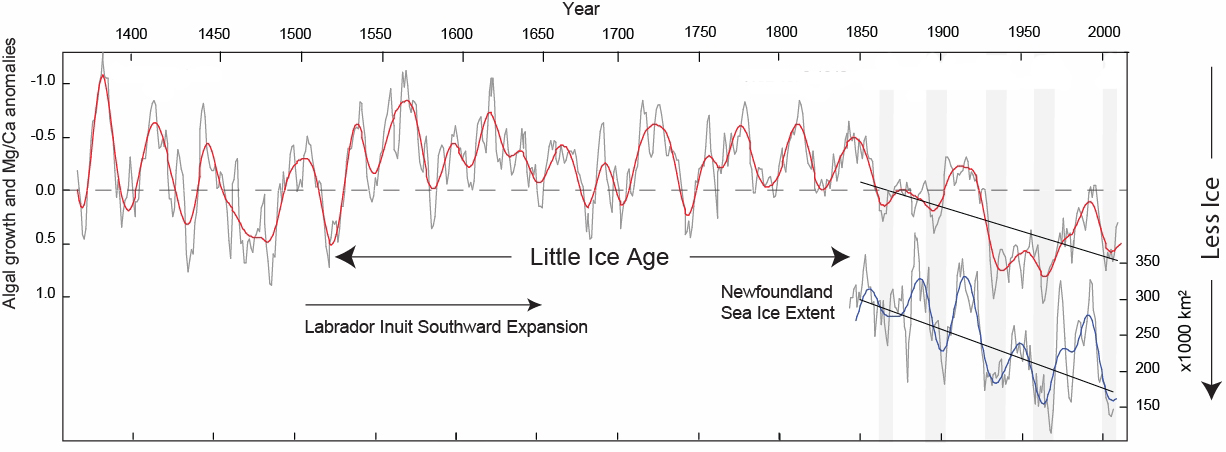- Home
- Science Introduction
- 2k Network Projects
- MULTICHRON Scientific Goals
MULTICHRON scientific goals

The overall aim of MULTICHRON is to develop the use of shell-based proxy records as a tool for analyzing the amplitude and structure of decadal and multidecadal climate variability in the North Atlantic region.
Following the ARAMACC project and a number of other projects, bivalve shell-based chronologies extending between 200 years and 1,350 years are available for the Gulf of Maine, North Icelandic Shelf, Faroe Islands, NW Scotland, the Irish Sea, the North Sea (Fladen Ground and Viking Bank), northern Norway, the Bay of Brest and the Iberian coast.
Further, bivalve chronologies are in development for southwest Iceland and St Kilda. In addition, stable oxygen analyses for the determination of seawater temperature and density have been carried out or are currently in development for several of these chronologies. Furthermore, two 650 year long coralline algae chronologies are available for the east Atlantic off Scotland and the Labrador coast, respectively. In addition, coralline algae records are being developed from three sites in the eastern Canadian Arctic (150-300 years, from Greenland (120 years) and there is ongoing work from Svalbard.
The scientific question will be addressed by detailed and comprehensive out analysis of CMIP5 and CMIP6 model output in terms of the dynamical mechanisms that drive multidecadal-scale variability and control the wider responses in the atmospheric and oceanic circulation.
We will assemble and further develop unique, annually resolved marine proxy archives i.e. bivalve shell and coralline algal (based chronologies from the Atlantic realm). We will also co-analyse sclerochronological data from multiple sites with numerical model simulation.
